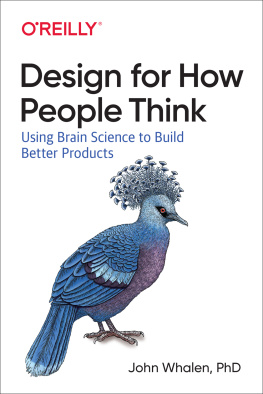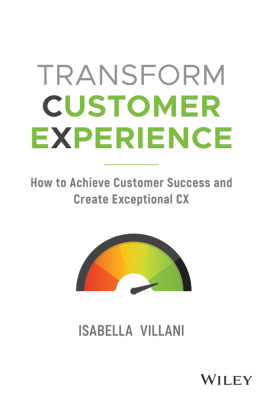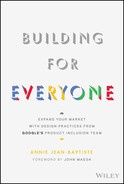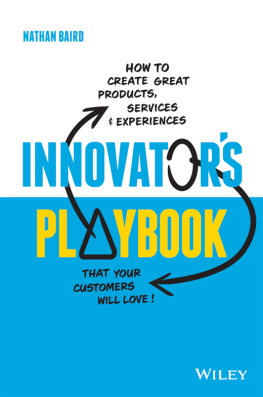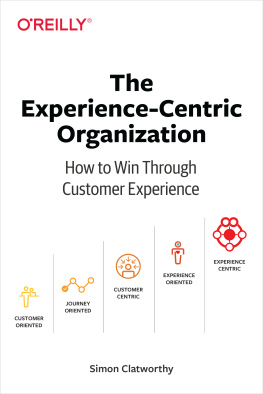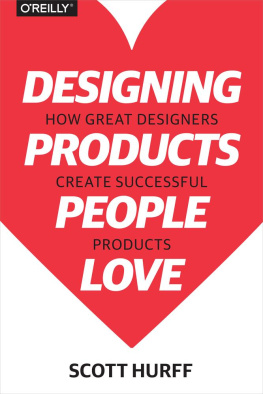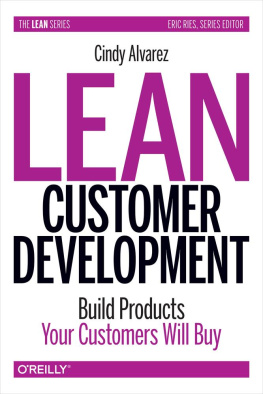DESIGN FOR HOW PEOPLE THINK
by John Whalen, PhD
Copyright 2019 John Whalen. All rights reserved.
Printed in the United States of America.
Published by OReilly Media, Inc., 1005 Gravenstein Highway North, Sebastopol, CA 95472.
OReilly books may be purchased for educational, business, or sales promotional use. Online editions are also available for most titles ( http://oreilly.com ). For more information, contact our corporate/institutional sales department: (800) 998-9938 or corporate@oreilly.com.
Development Editor: Angela Rufino Acquisition Editor: Jessica Haberman Production Editor: Katherine Tozer Copyeditor: Jasmine Kwityn Proofreader: Rachel Head Indexer: Lucie Haskins | CoverDesigner: Karen Montgomery Interior Designers: Ron Bilodeau and
Monica Kamsvaag Illustrators: Rebecca Demarest |
April 2019: First Edition
Revision History for the First Edition:
2019-03-20First Release
See https://www.oreilly.com/catalog/errata.csp?isbn=0636920077916 for release details.
The OReilly logo is a registered trademark of OReilly Media, Inc. Design for How People Think and related trade dress are trademarks of OReilly Media, Inc.
Many of the designations used by manufacturers and sellers to distinguish their products are claimed as trademarks. Where those designations appear in this book, and OReilly Media, Inc., was aware of a trademark claim, the designations have been printed in caps or initial caps.
Although the publisher and author have used reasonable care in preparing this book, the information it contains is distributed as is and without warranties of any kind. This book is not intended as legal or financial advice, and not all of the recommendations may be suitable for your situation. Professional legal and financial advisors should be consulted, as needed. Neither the publisher nor the author shall be liable for any costs, expenses, or damages resulting from use of or reliance on the information contained in this book.
978-1-491-98545-8
[GP]
[ contents ]
[ Preface ]
Why I Wrote This Book
A Psychologist Doing Product and Service Design? How Interesting
A common response when I introduce myself as a psychologist who does product design is surprise: Isnt that the job of designers? Oh, you must really get into the customers head! Are you analyzing me right now? [No comment! ;)]
While often intrigued, these people dont know how knowledge about human cognition and emotion can be applied in digital product and service design. They are not alone. After giving a talk at SXSW, I had more than one person say, That is so cool! I wish I knew how to use that in my products
So Do You Want the Secret to Designing a Great Experience?
Start by thinking of a truly great experience in your life. Was it one of lifes milestones? The birth of a child, marriage, graduation, etc.? Or was it a specific moment in timea concert with your favorite band, a play on Broadway, an immersive dance club, an amazing sunset by the ocean, or watching your favorite movie?
You might remark that it was brilliant or an amazing experience to a friend.
What you probably didnt think about was how many different senses and cognitive processes blended together to make that experience for you. Can you almost smell the popcorn when you think of that movie? Maybe the play had not only great acting but creative costumes and lighting and starred someone you thought was good-looking and moved with amazing grace. Was it the dancing with festive fans nearby? So many elements come together to provide a singularly great experience.
How might you go about designing a great experience for your product or service? What are the sensations, emotions, and cognitive processes that make up your experience? How can you tease them apart systematically into component parts? How will you know you are building the right thing?
This book is designed to help you understand and harness what we know about human psychology to unpack experiences into their component parts and uncover what is needed to build a great experience. This is a great time to do so. The pace of scientific discovery in brain science has been steadily increasing. There have been tremendous breakthroughs in psychology, neuroscience, behavioral economics, and humancomputer interaction that provide new information about distinct brain functions and how humans process that information to generate that feeling of a single experience.
How Humans Think About Thinking (And What We Dont Realize)
Your thoughts about your own thinking can be misleading because there are limits to your awareness of your own mental processes. We all know what its like to struggle over a decision about which outfit to wear for a big date or a job interview: Will you meet their initial expectations? Will they get the wrong impression? Does it look good? Do you look professional enough? Are those shoes too attention-grabbing? There are a lot of thoughts therebut there are still more thoughts that you are unable to articulate, or are even aware of.
One of the fascinating things about consciousness is how much of our thinking is impenetrable to our own awareness. For example, while we are easily able to identify the shoes we plan to wear to an interview, we do not have insight into

